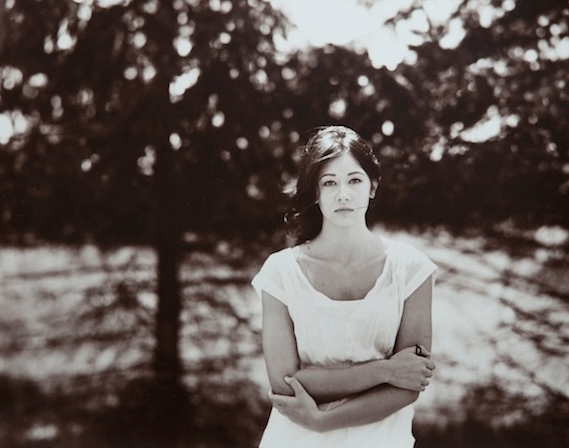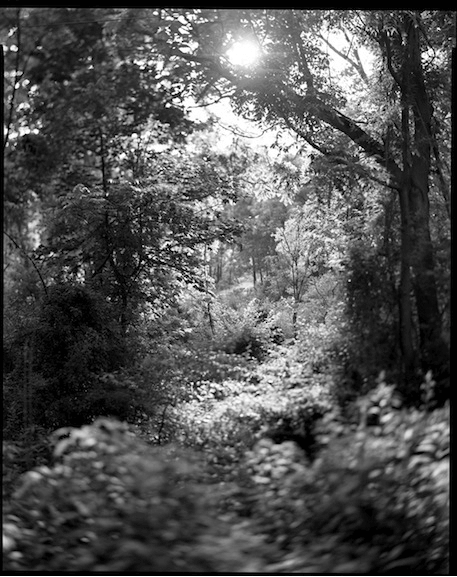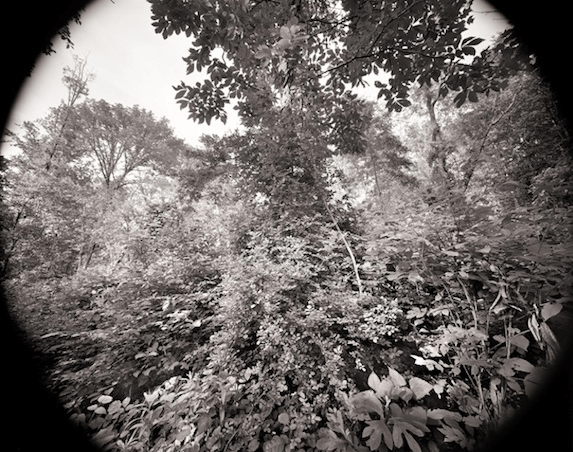Michael Barolet: Striving for the Intimate Photograph


Whether shooting friends just hanging out or capturing vast, open landscapes, Michael Barolet conveys a sincere intimacy that has become the hallmark of his work. His portraits negate any sense of pretense to reveal unfiltered and honest depictions of the people that he photographs. The impression is that these are real men, woman, and children who are both beautiful and flawed. Looking at his photographs of fields and woodlands is like staring down those visions that flicker in the mind’s eye after waking from a dream.
Born in Northern Virginia, Barolet now divides his time between New York City and the place where he grew up. He works in a variety of formats ranging from 35 mm to 8 x 10. Citing Jock Sturges, Sally Mann and Emmet Gowin as influences, he has drawn from his deep knowledge of art history and the world around him to cultivate a style of photography that is all his own.

When did you first become interested in photography? Do you remember your first camera? What were the first objects that you liked photographing?
I started taking pictures in high school. I wasn’t too serious about it and my school didn’t have a darkroom. I took snapshots of my friends and shit we used to get into. When I was 18 or 19 years old, I picked up an SLR, a Canon AE-1. I taught myself how to use it, built a dark room and learned how to develop my own film. At this point, I was taking pictures of random stuff with my friends. About a year later, I started selling my photographs and decided that photography was what I wanted to do.
So you knew at a young age that photography was going to be your career?
I don’t know how to do anything else. Photography is not just a passion. Photography is an obsession. I’m in serious trouble if I ever have to get a real job. I am in my mid-30s and just going with it. I look at a lot of photography. I am constantly surrounding myself with it. I am constantly reading about it. I am always looking for something new to influence me.

Can you talk about the different cameras you use? How do you think this has benefited your practice?
I started out using mostly 35 mm, and eventually moved up to medium format. For the last 10 or 11 years, I’ve shot on 8 x 10 format. This has drawn a lot of eyes to my work, because not many people shoot on large format anymore. Of course, I hope they are looking at my work because they like it as well. I still carry a 35 mm and medium format around with me, but 8 x 10 is my go-to format. I use it to shoot most of my portraits and landscapes. As far as street goes, I shoot with a 35mm Leica. I just shoot like crazy and see what I can get.
The 8 x 10 format is appealing because it has so much detail that it looks 3-dimensional. I don’t make enlargements. I just make 8 x 10 contact prints, so it’s a very intimate and methodical way of working. I want someone to be able to hold the photograph in his or her hand, and not have to stand back to look at it. There’s a definite process. When I go out, I know how I want the photo to look in the end. I have an idea regarding the impact I want that photo to make and the feelings I want to evoke in people.
Your images of people are very raw at times, revealing emotional and/or physical states of being. How do you approach your subjects?
I am assuming you are referring to my 8 x 10 work. Because 8 x 10 is such a slow format, it’s not easy to use with people you don’t know. So most of these photos are of close friends of mine that I have known for years. They’ll do anything for me. I never ask them to pose or do anything. I let them be themselves. I just get behind the dark cloth and get a focus. Eventually, they are going to do something so beautiful and natural. I then ask them to freeze and it takes about 2 seconds for me to make the exposure.
What do you want to capture in your photographs of people?
I just want people to be themselves. I want them to come across as if saying, “This is who I am, take it or leave it.” Whether they are nude, whether they are clothed, it doesn’t matter. I don’t want any fantasy in my images. I want viewers to look at the photos and see these beautiful people as they are. I think that is a very intimate thing. I guess that’s the best word to describe it, intimacy. That is what I am striving for.

There is a still and haunting feeling sensed in your photographs of landscapes. Why do you think this is?
In 2005, I started shooting landscapes on 8 x 10. It was right after my older brother had passed away. I was spending a lot of time outside, seeking solitude I guess. I had my camera with me and started taking photos of landscapes. These first images were never pointed or focused at anything in particular. This seemed to be different from typical landscape photographs, which are usually directed at some focal point.
In my landscape images, I want the viewer to actually feel like they are in the woods and surrounded by the natural atmosphere. I use a really wide lens for my landscapes in order to capture this immersive and surrounding feeling. I want the viewer to feel all sensations that I feel when going out into the woods in the middle of summer to shoot. Like the humidity and bugs crawling on your skin. In this sense, I am strongly influenced by the work of Andrea Modica. She did a landscape series of Florida years ago. I got that same impression of being “surrounded” when I first saw her photographs.

Your landscape images also have an intimate, dream-like quality to them? Where were these photos taken?
When I am in Virginia, I stay in an area located north of Washington D.C. It’s horse country and pretty rural. Most of my landscape photographs were taken right off the Appalachian Trail and Blue Ridge Mountains. It’s very private and vast. You can go out there and go hiking for miles and never see another person.
I love the surprising vantage points of your street photography. Can you tell me about your approach to taking these images?
There really is no approach to my street photography. I am shy when it comes to people on the street. I use my Leica or my little Canon camera and preset the focus and just shoot. Usually I shoot from chest height, never bringing the camera up to my eye. It’s always a surprise in the end. And when I am on the streets, I shoot a lot of film, sometimes 10 to 20 rolls a day. I just run thought it and see what comes out. It’s more about the editing process at the end. Finding some good images that work well side by side that I can do something with.
There are far better street photographers whom I really admire. My good buddy Andre Wagner is one of the greatest street photographers that I have ever seen. The work of Richard Sandler from the 1980s is also amazing.

What interests you when taking photographs on the streets?
I’m kind of obsessed with people in general, because we are all so different. What people look like when they think nobody else is looking. I like faces and I like postures. People are always looking at something or doing something, not caring or worrying what others are thinking about them at that moment. When I see someone hunched over, or and I see someone making an interesting facial expression, I try to capture it. There’s always something new or exciting about every single person you see on the street. And this inspires me to take pictures.
What do you have planned for spring/summer?
I spend a lot of time in Virginia during the summer. Typically, I print most of my work during the winter and shoot all spring and summer long. I will be here in Virginia for about 2 months and then I go back up to New York for a while. I usually figure something out to do and then do it a couple of days later. I don’t really make a whole lot of plans ahead of time.
Responses